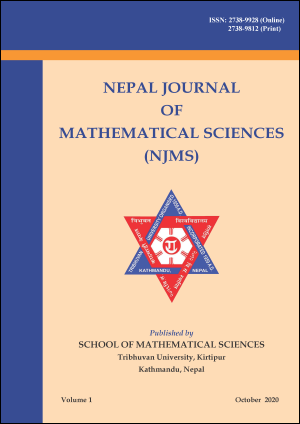A Novel Prey-Predator Quadratic Harvesting Model via Optimal Control Theory and Hopf Bifurcation
DOI:
https://doi.org/10.3126/njmathsci.v1i0.34155Keywords:
Phytoplankton, Zooplankton, Fish, Optimal Control, Hopf bifurcation, Routh-Hurwitz criteriaAbstract
In this investigation, a predator-prey interaction model among Phytoplankton, Zooplankton and Fish has been developed. In the absence of Zooplankton and Fish, it is assumed that Phytoplankton grows logistically. It is assumed that Zooplankton consumes Phytoplankton and Fish consumes Phytoplankton as well as Zooplankton. Holling type I & II functional responses have been considered to formulate the our proposed model. It is considered that Phytoplankton releases some toxin in the aquatic environment which makes some death in Zooplankton population. Quadratic harvesting is considered on Fish species. Boundedness of the solution of our proposed model has also been studied. Local stability of the system around each equilibrium point has been investigated. Also, the global stability of the interior equilibrium point has been studied. Existence condition of Hopf bifurcation of our proposed system has been studied. It is found that half saturation constant (α) can change the system dynamics. It is also found that the harvesting rate of Fish (E) and consumption rate of Zooplankton (γ1) has a significant role in the stability of the system. Again, it is found that the harvesting of Fish species will be increased if the selling price of Fish (p) and the annual discount (δ1) of Fish production cost increases. It is also found that the optimal harvesting rate of Fish decreases due to the increase of cost (c) of harvesting of Fish. Finally, some numerical simulation results have been presented to verify our analytical findings.
Downloads
Downloads
Published
How to Cite
Issue
Section
License
© School of Mathematical Sciences, Tribhuvan University

